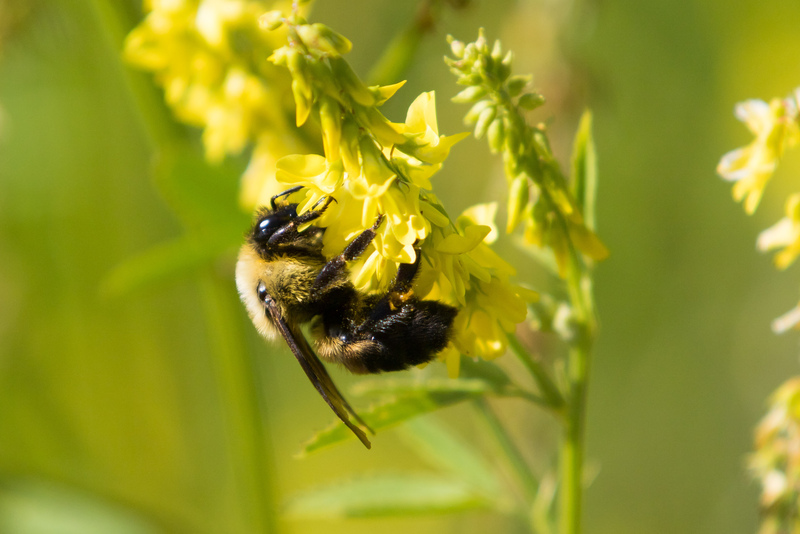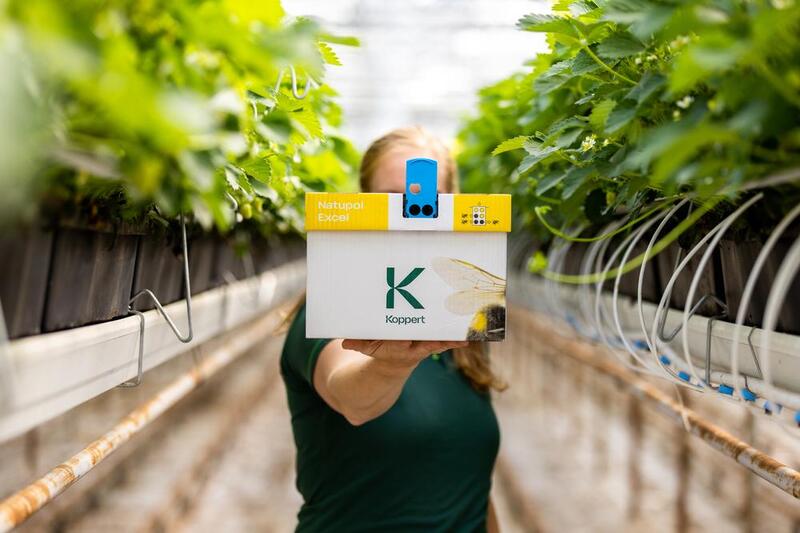
Consistent quality and continuous innovation
The introduction of natural pollinators into greenhouses since the 80s resulted in spectacular increases in yield and improved quality in tomato, soft fruits and seed production. For the past 30 years, our Natupol range of products has become synonymous with quality, innovation and availability.
The fact that the world’s populations of natural pollinators, especially honeybees, have declined during the same period and are now seriously jeopardized, has only added to the company’s endeavor to keep its breeding colonies as vital and resilient as possible. More than 40% of invertebrate pollinators such as bees and butterflies face extinction according to a recent United Nations report.
"There is a world of difference between the hives we produced in 1989 and the high-tech bumblebee colonies we produce today. Three decades of know-how, technological progress, experience in the field, and feedback from growers have gone into the development of our hives today", says Natupol Product Manager Remco Huvermann: "Natupol is much more than a box of bumblebees, it’s an entire concept."

Constant improvement
"Our product quality targets are focused on 5 different aspects; the design and effectiveness of the hive itself, the selection, rearing and vitality of the bumblebees, continuous R&D and innovation, live cargo logistics, and worldwide availability," says Remco. "We operate in a dynamic market and need to respond rapidly to new horticultural and agricultural challenges, changing climatic situations, and the demands from growers. The awareness that there is always room for improvement keeps us on our toes and constantly in search for areas of potential innovation. We won’t rest until we achieve the ultimate goal of 100% sustainability."
Improvements over the past few years include remote control of entry hatches, colour codes to help bumblebees to find their hives in artificial lighting, and better ventilation so that bumblebees spend more time pollinating instead of expending energy on cooling the hives, to name but a few. Together, this constant innovation has resulted in a new generation of ‘smarter’ hives.
While the Natupol Excel hive has been designed for crops with a high density of flowers (35-60 per m²/115-197 per ft2) and is ideal for strawberries, cherry or snack tomatoes, and all crops under artificial lighting; the larger hive, containing 100-125 workers, Natupol Excel Start Up is suitable for crops covering a surface of more than 2000 m² (6562 ft2). The standard Natupol hive for the pollination of most fruit and vegetable crops with approximately 25-35 flowers per m² continues to give growers quality yields. "The range ensures that we have perfectly matching products for the growers’ different requirements. This together with personal, tailored advice gives you real value for money," Remco explains.
Best practice advice
"As Koppert Biological Systems grows, so does our need to stay in touch with our customers and growers. We provide our local advisors and distributors with up to date information so that they benefit from the latest research results and solutions. Keeping our finger on the pulse also means listening attentively to growers in the field and receiving and responding to their feedback," Remco explains. "Many of our solutions are based on growers’ observations and we value their role in communicating the problems they encounter in the field. When it comes to finding solutions for today’s cultivation issues, we are all in partnership with nature to make cultivation and the planet healthier, safer and more productive now and in the future."
Quality breeding facilities and worldwide availability
Natupol hives are produced at facilities on three different continents so that they are bred close to their respective markets and ready to do their pollination work on arrival. For example, in the United States, the Bombus impatiens, is the bumblebee of choice and is bred in Howell, Michigan. At that facility, as well as all those around the world, Koppert applies strict quality protocols when it comes to breeding bumblebees. The enclosed facilities produce bumblebees in accordance with local and international legislation and are subject to checks by national authorities.
Koppert’s success lies in the fact that it takes full responsibility for the whole distribution chain. The distribution of bumblebees in different climates can be challenging. Distribution partners have adapted their storage facilities to cater for the needs of our bumblebees. Trucks are continuously monitored to check for any delays or unforeseen problems. Standard protocols have been implemented to ensure bumblebee colonies are handled with care and stored correctly in different climatic zones so that they arrive in the best possible health, ready for effective pollination.
"The integration of our production units with dedicated local logistics partners allows us to respond to the expectations of a constantly changing market. Timely availability is crucial, and we can guarantee continuous supply of quality hives to our customers worldwide," Remco assures us.